Showing 21–30 of 121 results

Darsanamala written in Sanskrit is one of the major works of Narayana Guru. Consisting of 100 verses divided into 10 chapters of 10 verses each, each chapter gives a different vision, complete in itself. The author here adopts the system of looking at non-dual, Ultimate Reality or Brahman from ten different points and a real seeker can intuitively perceive the non-dual Brahman within himself, he being inalienable from it.
Darsanamala written in Sanskrit is one of the major works of Narayana Guru. Consisting of 100 verses divided into 10 chapters of 10 verses each, each chapter gives a different vision, complete in itself. The author here adopts the system of looking at non-dual, Ultimate Reality or Brahman from ten different points and a real seeker can intuitively perceive the non-dual Brahman within himself, he being inalienable from it.

Studying European theories of the sublime particularly against contemporary critical uses of the term, the study maintains that the Brahman is one of the most fully developed sublimes. It analyses the relationship of a devotee, with his God when the latter is incapable of representation.
The last two decades of the twentieth century have been marked by an immense revival of interest in the sublime, yet past studies have used Western texts as their archives. This book dramatically shifts the focus by examining a major instance of an Indian sublime: the Brahman. Mishra examines European theories of the sublime, reads them off against contemporary critical uses of the term (notably by Lyotard and Paul de Man) and proposes that the Hindu Brahman constitutes an instance of one of the most fully developed of all comprehensive theory of both the Indian sublime and Indian devotional verse. The book offers a highly original interpretation of one fundamental problem in Indian cultural history: how does a devotee establish a relationship with God (Brahman) when God is ultimately incapable of representation? Mishra brilliantly exposes this problem by introducing the theme of the sublime and shows how the problem has been confronted across a range of central Hindu texts covering a large panorama of historical time and several Indic languages.
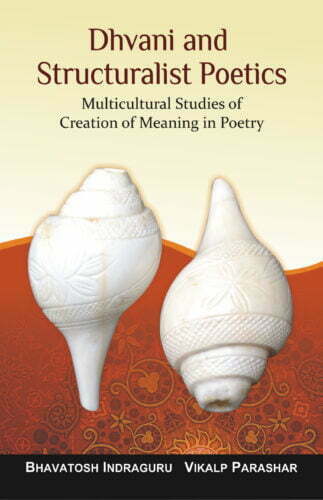
The book is an in-depth study of dhavni, the well established Indian critical system and the Western structural poetics. It also examines the independent universalisation and necessity to explicate words, letters and syllables for the sake of meaning formation.
Dhvani and structuralist poetics emerge as the two primary theoretical frameworks in which the reality of inquisition and propagation of comprehensibility and creativity of the artistry could be well-conceived, exposed and implied. In each of the two systems, the maturity of conception and universality of expression of the content, context and the medium are quite remarkable.
The book is an in-depth study of dhvani, that is, the Indian critical system developed around the eighth century ce, and structuralist poetics the Western critical premise, commencing with Ferdinand de Saussure’s Course in General Linguistics that substantiate an adequate methodology to understand the formation of categories, contents, constructs and mediums as a necessary corollary to an analytical procedure that would bring about transformation. It examines the independent universalisation of sabda, pada, varna, vakya, bhava, vibhava, anubhava, sthayibhava, sancaribhava, alambana and uddipana for the sake of an absolute artistic formation, especially as propounded by Anadavardhana, the progenitor of dhvani system. It then delves deep into the structuralist poetics, following Saussure, Barthes, Jakobson and others, that focuses on the need and necessity to explicate words, letters, syllables and even otherwise an experience so as to create a valid notation, out of each of these, for the sake of totality in the meaning formation.
The study has immense significance owing to the fact that it promotes proper understanding and enjoyment of literature. Moreover, the fact is that Indian and the Western scholarships have not paid much attention to the subject discussed herein. The volume, therefore, will be of an immense interest to scholars and students of poetics and literature in general.

This newly-edited edition of D?ks??prak??a brought out jointly by DK Printworld and The Tantra Foundation, New Delhi is an authentic compilation based on some of the authoritative Tantras such as the ??rad?tilaka and the Tantras?ra of ?gamav?gi??a. The short and succinct work covers a wide range of ta?ntric topics such as rites associated with ta?ntric form of initiations, the qualities of guru and the disciple, activation of ta?ntric mantras by means of the esoteric rituals and worship of deities.
???????? ??? ?????????? ?? ???? ?? ?? ????????? ?? ?? ?????????? ??? ?????? ??????? ??? ?? ? ?? ??????? ??????? ????? ?? ?????? ???? ?? ?????? ??????? ?? ?????? ?? ???????? ?????? ?? ????????? ?? ???? ?? ????? ???? ?? ?????? ?? ????? ?????????? ?? ?? ????? ?? ?? ??? ? ????????? ??? ?????????-??????? ?? ???????? ?? ???? ?? ????? ???? ??? ??? ?? ?????? ?? ????? ?????? ??? ???? ???? ?? ?? ????? ???? ?? ? ???? ?????-???? ?????? ??????????? ??? ???? ?? ???? ??????? ?????? ?? ?????? ?? ???? ???????????? ???? ??? ? ??? ??????? ?? ??????? ?? ?? ??????? ????? ???????? ?? ??????? ?? ???? ?????? ?? ?????? ???????? ?? ??????? ?? ??????-?????, ?????????-?????, ?????????? ??? ?? ?????-??????? ????? ???? ??? ??????? ?? ?????? ????? ??????? ???? ??? ?? ??????? ?????? ?????? ?? ? ??? ??????-????????? ?? ????? ???? ??? ?????????? ???????? ??? ????????? ??? ????? ??? ???????????? ?? ??????????? ?? ?????? ?????? ???????????? ?? ?? ?? ?????????-???? ?? ????????? ?????? ???? ?? ??????? ?? ????????, ?? ????????? ?????? ????? ?????? ?? ? ???????????? ???? ?? ?????? ??? ?? ???????? (????????) ??? ???????? ?? ? ????? ?????? ??? ????-????? ?????, ???????????-?????, ??????-?????????, ?????? ?? ?????????? ?? ??????, ?????? ?? ?? ???? ?? ?????? ??? ????-??????? ?? ?????? ??? ???? ????????, ???????? ?? ?????????-??????, ??????? ????????? ?? ??????, ??????-????? ?? ???? ??? ?? ????? ??? ??????? ?????? ??? ?????? ?? ????, ????? ?????? ??? ???????? ?? ??????? ?? ????, ?????? ?????? ??? ???????? ???? ?? ????, ???? ?????? ??? ??????-??????, ????? ?????? ??? ????-??? ?? ?????? ??? ?????????? ???????? ?? ?????, ????? ?????? ??? ????? ???? ?? ?????? ?????? ?? ??????????? ?? ?????, ????? ?????? ??? ?????????????, ??????? ?? ?????????? ?? ???? ??? ??? ?????? ??? ?????? ??? ?? ???????????-???? ??? ?? ????? ??? ?? ?????? ?? ?? ?????? ???, ????? ?? ?????? ????????? ?? ?????????? ?? ??? ??? ?????? ?? ?
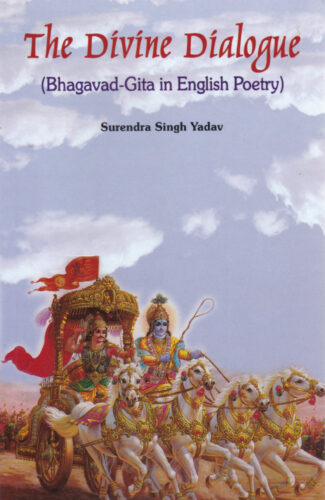
Dr. Yadav here captures the rich meaning of the Bhagavad Gita and presents it in a condensed form with a rare clarity. In a simple and fluent language, he brings out the glory of Lord Krishna and discusses the essence of the yoga of knowledge, karma yoga, the yoga of devotion and the yoga of meditation.
Recognising the significance of the Bhagavad Gita in the present times as a guide to understanding the life and attaining spiritual fulfilment, Dr. Surendra Singh Yadav conveys here its enduring message in the form of beautiful verses in English. In a simple and fluent language, the verses capture the rich meaning of the Gita and present it in a condensed form with a rare clarity. Much like his rare book in Hindi, titled, KrishnaArjuna Samvad, this work in English, brings out the glory of the Lord Krishna and gives out the essential substance of the yoga of knowledge, the karma yoga, the yoga of devotion and the yoga of meditation. The book will make essential reading for all as the Gita is concerned with the human quest in the battle field of life and provides the guidelines for a victory therein.
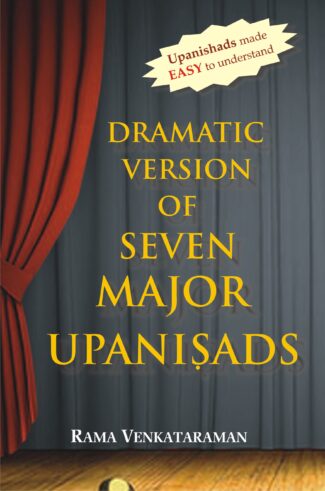
This book an English translation of the Tamil text expounds the wisdom contained in seven of the principal Upanishads in the style of short dramas. English transliteration and meanings of the Sanskrit verses are also included. The language is simple to follow which makes the Upanishads easily understandable by even a layman.
The Upanishads reveal the nature of true vidya: it is the knowledge which leads to the understanding of Brahman which alone is the Reality in the world of appearances. The dramas by Shri Mani Iyer based on the Upanishads render the meaning of the Upanishads in an interesting and captivating manner so that a wider audience can gain from the Upanishadic insight.
This book presents an English translation of Mani Iyers seven Upanishadic dramas, originally in Tamil, and includes English transliteration of the original Sanskrit verses. The dramas pertain to seven of the major Upanishads: Kena, Ishavasya, Prashna, Mundaka, Mandukya, Taittiriya and Katha. With reference to each drama, there is an introduction that reveals the major questions raised by the Upanishad, the manner in which the play proceeds, the nature of the story, its characters, and the conclusion of the play. The translation is simple to follow and possesses a rare clarity.
Because of the simple language and the clear meanings of the Upanishadic verses, this book will be valuable to readers in general, students in particular, and to those interested in knowing what our Upanishads contain and intend to convey.
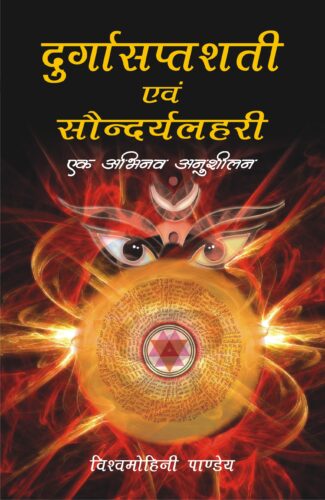
Since the inception of Creation, woman has always been adored as a symbol of strength (Shakti) and beauty (Saundarya). In reality, the importance of woman begins in the foremost ancient text of the Rigveda in its Vak Sukta. Upanishads also mention Usha Devi as eternally young woman. This trend continues in Puranas too. History of ancient India has been described in Puranas, and sanskriti (culture) shown therein is the sanskriti of a comman man. Markandeya Purana, one of the eighteen Mahapuranas, consists a collection of thirteen chapters in 700 shlokas named Durgasaptashati, depicting that form of Goddess Bhagavati, the Universal Mother, which explores womans dignity with its constructive power.
In the same tone, Saundaryalahari mentions about Bhagavati who is simply Kundalini, and her depiction as aesthetically beautiful woman is manifested by Shankaracharya. This scripture reveals that the worshipping power inspires us for continuous creation, and discusses about philosophical (Tantric), cultural and literary trinity. In this deliberation antiquity manifests itself into modernity and ultimately into science. When meaningfulness of word-Brahman takes divine form, then it becomes humanity and there itself we realize the concept of Shiva-Shakti. The light of Brahman exists in this world. This exact realisation of Brahma is the subject-matter of this book.
The sources of Indian culture are found in Darshan and Tantra. This expounds the expression of Tantra philosophy in the comparative appreciation of Durgasaptashati and Saundaryalahari. This book appreciates poetry, culture and literature and at the same time, there is also beautiful assimilation of aesthetic sense, Tattva-Darshan and literature.
Since the inception of Creation, woman has always been adored as a symbol of strength (Shakti) and beauty (Saundarya). In reality, the importance of woman begins in the foremost ancient text of the Rigveda in its Vak Sukta. Upanishads also mention Usha Devi as eternally young woman. This trend continues in Puranas too. History of ancient India has been described in Puranas, and sanskriti (culture) shown therein is the sanskriti of a comman man. Markandeya Purana, one of the eighteen Mahapuranas, consists a collection of thirteen chapters in 700 shlokas named Durgasaptashati, depicting that form of Goddess Bhagavati, the Universal Mother, which explores womans dignity with its constructive power.
In the same tone, Saundaryalahari mentions about Bhagavati who is simply Kundalini, and her depiction as aesthetically beautiful woman is manifested by Shankaracharya. This scripture reveals that the worshipping power inspires us for continuous creation, and discusses about philosophical (Tantric), cultural and literary trinity. In this deliberation antiquity manifests itself into modernity and ultimately into science. When meaningfulness of word-Brahman takes divine form, then it becomes humanity and there itself we realize the concept of Shiva-Shakti. The light of Brahman exists in this world. This exact realisation of Brahma is the subject-matter of this book.
The sources of Indian culture are found in Darshan and Tantra. This expounds the expression of Tantra philosophy in the comparative appreciation of Durgasaptashati and Saundaryalahari. This book appreciates poetry, culture and literature and at the same time, there is also beautiful assimilation of aesthetic sense, Tattva-Darshan and literature.
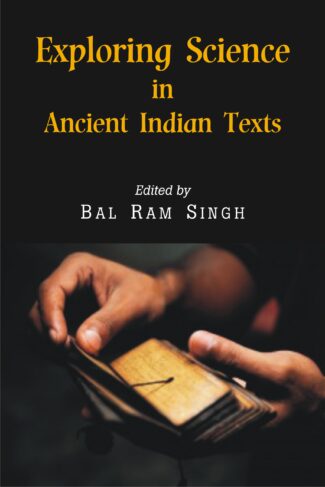
The volume is an attempt to lay down some of the fundamental principles of Vedic traditions and practices for improving the efficacy of modern science. As ancient Indian texts contain many advanced technologies and scientific developments, it is for one’s surprise that what technologies were in use and what scientific developments are relevant in our time.
Philosophical and cultural factors play a significant role in developing scientific theories and interpreting data. These factors are also influential in assessing science and technology. We experience a visible distinction in the philosophy and culture of the West and East, mainly due to geographical and climatic reasons. And this difference reflects in their approach to science and technology too. Modern science has many roots in Vedic and Upanishadic knowledge. For historical reasons or so, this has been deliberately disassociated even from the philosophical bases. Vedic traditions or dharma traditions address many a question that modern science addresses. These include the origin of matter and universe, origin of life, origin of species and evolution, state of consciousness and mind, among others.
This book addresses topics such as the basic premise of scientific approach to examine reality; mathematical and scientific knowledge, derivation, and application of Vedic perspective; and models for current scientific issues with Vedic perspective, and thus covers ideas of matter and universe, consciousness and mind, and fundamental questions of defining and applying science and scientific approaches. It also deliberates on more attractive aspects of Vedic knowledge such as Ayurveda and yoga, which are fast finding base across the globe.
The volume is an effort to lay down some of the fundamental principles of Vedic traditions and practices for improving the efficacy of modern science. As ancient Indian texts contain many advanced technologies and scientific developments, it is for one’s surprise that what technologies were in use and what scientific developments are relevant in our time.
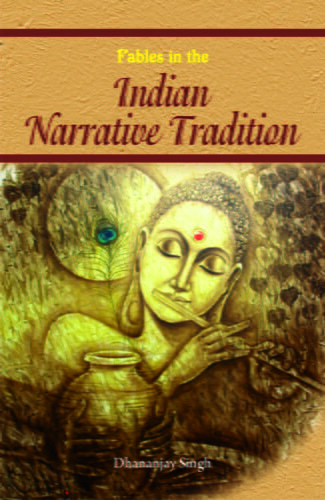
The book studies and develops an overall understanding of the Indian fables, their philosophy, mutual relationships, proliferation and textual scholarship. It also establishes the chronological development of the fables, right from the earliest utterances found in the Vedas to the epics, the Pa¤catantra and Buddhist texts.
The fable is the most metaphorical of all narrative genres. The Indian fable, being both realistic and other-worldly, is recognised as a wonderful integration of the aesthetic and the discursive. Imitating the habits, chores, beliefs of the Indian culture, it is the dominant form in texts like the Pancatantra, the Jatakas, and the Hitopadesha. It is included at different places in the long narratives of the Mahabharata and the Yogavasishtha, and is disseminated in the form of the various folktales of India. This volume explores the unique tradition of Indian fables to present a theoretical understanding and critical analysis of the various aspects of the Indian fable.
The work studies the Indian fables spread across various compositions in the context of the dominant discourses of the narratives, their form and structure and their continuing relevance. It develops an overall understanding of the Indian fables, their philosophy, mutual relationships, proliferation and textual scholarship. It also establishes the chronological development of the fables, right from the earliest utterances found in the Vedas to the epics, the Pa¤catantra and Buddhist texts. It emphasises the significance of the Indian fable as a discourse, often the narrative becoming subservient to the fables discursive function.
This interesting study will prove useful to scholars and students of Indology, particularly those concerned with Indian culture and literary tradition, as well as general readers interested in fables and stories of the Indian tradition.
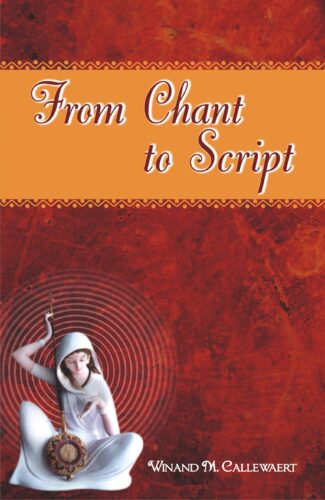
This book is an omnibus of eleven thoroughly revised articles on Nirguna Bhakti, published in the 1970s and 1980s. In order to complete the overall view of the author’s research on Nirguna Bhakti, this volume is appended with a summary of nine books published during 1989-2009.
Callewaert started to publish long before the computer age, in 1974. He sent his PhD dissertation to the press typed on paper and then revised three typeset proofs. In 2009, he sent his most recent publication to the publisher on a memory stick: 2,187 pages. Many of the early articles, especially those of the pre-computer age, may no longer be easily available and for that reason eleven articles were selected and thoroughly revised for this publication (pp. 3-169). The research career of Callewaert was at the beginning strongly inspired by F. Camille Bulcke (Ranchi) and Charlotte Vaudeville (Paris). He followed their advice and worked mainly on manuscripts with Nirguna Bhakti literature, preparing critical editions and English translations. In order to complete the overall view of this research in that area, in this book are further given a summary of nine books published in the period 19892009 (pp. 171-216) and a summary of eight articles (19962011, pp. 217-44).
During his career he has photographed many manuscripts now threatened with destruction (the result is now digitized in the University of Heidelberg Library); he has prepared critical editions and translations in collaboration with several outstanding colleagues, and he realized how wrong he was in 1971 when defining his research future: to copy as many manuscripts as possible and to reconstruct the archetype, of the original Kabir and others, after a stemmatic comparison of the manuscripts. For, scribes committed errors, intentionally or unknowingly, and variant readings, Callewaert thought, should enable a researcher to establish the relationship between the manuscripts. What eventually turned out to be a wrong methodology became a very exciting adventure, when Callewaert started to discover the singers in the manuscripts. This evolution too is discussed in the present volume, From Chant to Script.
| There are no products |